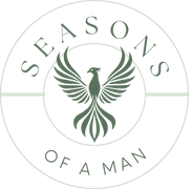Joint pain can slow down many men, but staying active is key for overall health. That’s why we’re excited to share some low-impact workout options that are easier on your knees, hips, and back while still providing excellent health benefits.
Joint health plays a critical role in our overall wellbeing, especially as we age. Regular physical activity can help maintain joint flexibility while strengthening the muscles that support them.
The Impact of Physical Activity on Joints
Exercise affects our joints in several important ways. When we move regularly, we increase blood flow to joint tissues, which delivers nutrients needed for repair and health.
For men experiencing joint pain from conditions like arthritis or osteoarthritis, the right kind of movement can actually reduce discomfort. This might seem counterintuitive, but lack of movement can lead to stiffness and more pain.
Moderate-intensity physical activity helps maintain cartilage health and joint lubrication. This is why doctors often recommend exercise as part of treatment plans for joint issues.
Weight management through exercise also reduces pressure on weight-bearing joints like knees and hips. Every pound lost takes about four pounds of pressure off these joints!
Varieties of Low-Impact Workouts
Low-impact workouts offer joint-friendly options that minimize stress while maximizing benefits. Swimming and water aerobics top the list because water supports body weight, reducing pressure on painful joints.
Cycling provides excellent cardiovascular benefits without jarring impacts. Whether using a stationary bike or riding outdoors, it strengthens leg muscles that support knee joints.
Walking is accessible to almost everyone and requires minimal equipment. A good pair of supportive shoes can make it even gentler on joints.
Yoga and Pilates improve flexibility, balance, and core strength. These practices enhance mobility while strengthening the muscles around joints, providing better support.
Strength training with proper form builds muscle that protects joints. Even with arthritis, controlled resistance exercises can improve function and reduce pain.
Key Low-Impact Workouts for Men

Low-impact exercises can help protect your joints while still providing excellent health benefits. These activities put less stress on your body but still build strength, improve flexibility, and boost cardiovascular health.
Water Workouts for Cushioned Support
Swimming and water aerobics are perfect for men of all fitness levels. Water provides natural resistance while supporting your body weight, reducing pressure on painful joints by up to 90%.
Try swimming laps using different strokes to work various muscle groups. Even a gentle 30-minute swim can burn significant calories while being kind to your joints.
Water aerobics classes are another great option. These include exercises like water jogging, leg lifts, and arm movements that strengthen your whole body.
The buoyancy of water makes these workouts particularly helpful for men recovering from injuries or dealing with arthritis. Water’s resistance also helps build muscle without the jarring impact of land-based exercises.
Tai Chi and Yoga for Balance and Mobility
Tai Chi and yoga offer tremendous benefits for joint health through slow, controlled movements. These practices improve flexibility and balance while strengthening the muscles that support your joints.
Yoga poses like Warrior I and II help strengthen leg muscles while improving hip mobility. Child’s pose and gentle twists can release tension in your back and shoulders.
Tai Chi’s flowing movements enhance coordination and body awareness. The practice focuses on proper alignment, which reduces joint strain during daily activities.
Both activities incorporate mindfulness and breathing techniques that can lower stress levels. This is important since stress can worsen joint pain and inflammation.
We recommend starting with beginner classes to learn proper form and modifications if needed.
Cycling and Walking for Cardiovascular Health
Cycling and walking provide excellent cardiovascular benefits without the joint impact of running or jumping exercises.
Stationary bikes allow you to control resistance and workout intensity. Try alternating between periods of higher and lower intensity for an effective workout. Recumbent bikes offer extra back support if needed.
Walking is perhaps the most accessible exercise. A brisk 30-minute walk can:
- Improve heart health
- Strengthen leg muscles
- Boost mood and energy
- Help maintain healthy weight
Good walking shoes with proper cushioning can further reduce impact. Consider walking on softer surfaces like grass or dedicated walking tracks when possible.
Both activities can easily be adjusted to match your fitness level, making them perfect for beginners or those returning to exercise after a break.
Exercise Techniques and Safe Practices
When doing low-impact workouts, using the right techniques is crucial for protecting your joints. The following strategies will help you exercise effectively while minimizing strain on your knees, hips, and other vulnerable areas.
Strength Training Without Joint Strain
Strength training doesn’t have to hurt your joints. We recommend starting with bodyweight exercises before adding resistance. Modified squats are excellent – try not going as deep or using a chair for support.
Wall sits are another joint-friendly option. Just lean against a wall with your knees bent at 90 degrees and hold the position for 20-30 seconds.
For upper body work, consider modified planks. You can do them from your knees instead of toes to reduce pressure on wrists and shoulders.
Resistance bands are also fantastic tools! They provide adjustable resistance without the joint impact of free weights. Try band rows, gentle chest presses, or seated leg extensions.
Remember to focus on proper form rather than how much weight you’re lifting. Even light resistance with perfect technique builds strength effectively.
Proper Warm-Up and Cool-Down Routines
Never skip your warm-up! We suggest 5-10 minutes of light activity like walking or gentle cycling to increase blood flow to your muscles before exercise.
Dynamic warm-ups prepare your body better than static stretches. Try arm circles, gentle knee lifts, or ankle rotations to lubricate your joints before activity.
For your cool-down, gradually reduce your exercise intensity for about 5 minutes. This helps your heart rate return to normal and prevents blood from pooling in your legs.
Follow this with light stretching when your muscles are warm. Hold each stretch for 15-30 seconds without bouncing.
Cool-downs help reduce muscle soreness and may improve your range of motion over time. They’re especially important for men over 40, when recovery becomes more challenging.
Incorporating Flexibility and Stretching
Flexibility work is essential for joint health but is often neglected in men’s fitness routines. We recommend adding dedicated stretching sessions 2-3 times weekly.
Key stretches for joint health:
- Hamstring stretches (seated or standing)
- Knee-to-chest stretches for lower back
- Gentle shoulder stretches
- Hip flexor stretches
Try holding each stretch for 30 seconds while breathing deeply. Never push to the point of pain – you should feel tension, not discomfort.
Yoga and tai chi are excellent practices that combine stretching with balance work. Many studios now offer classes specifically designed for joint health or men with limited flexibility.
If you’re extremely tight, try stretching in a warm shower or bath when your muscles are more pliable. Even 5-10 minutes of daily stretching can significantly improve your joint mobility.










